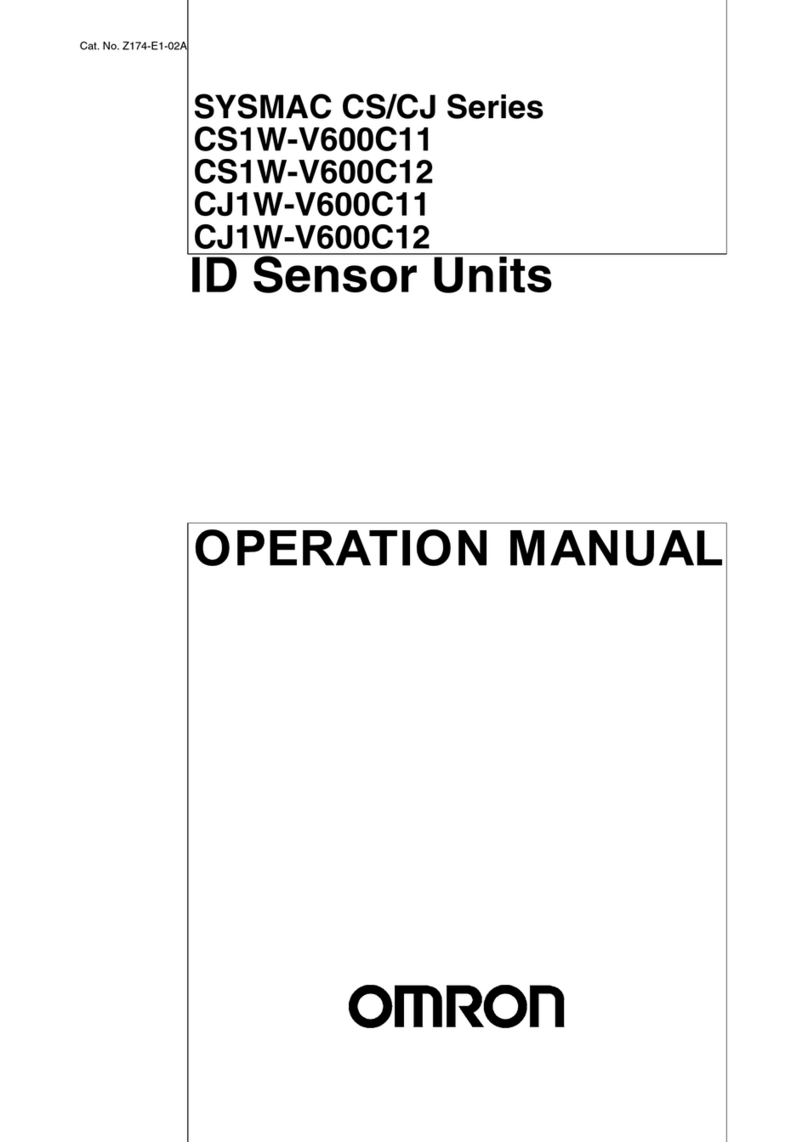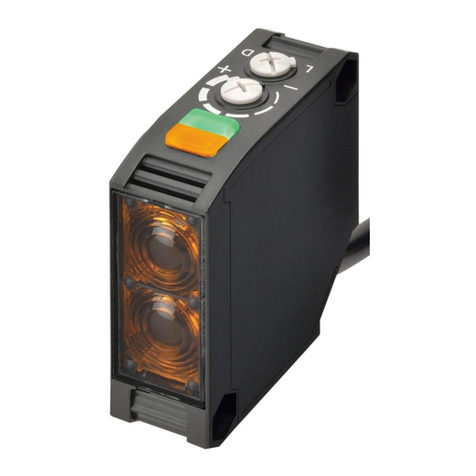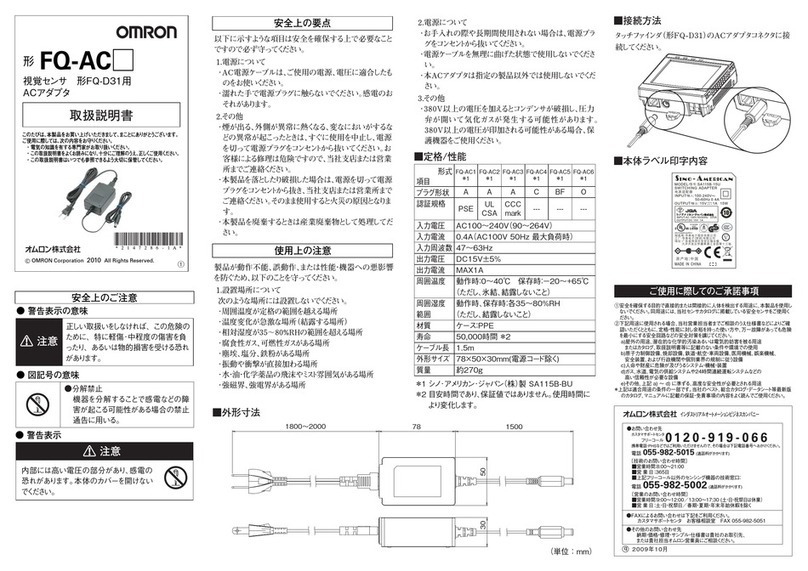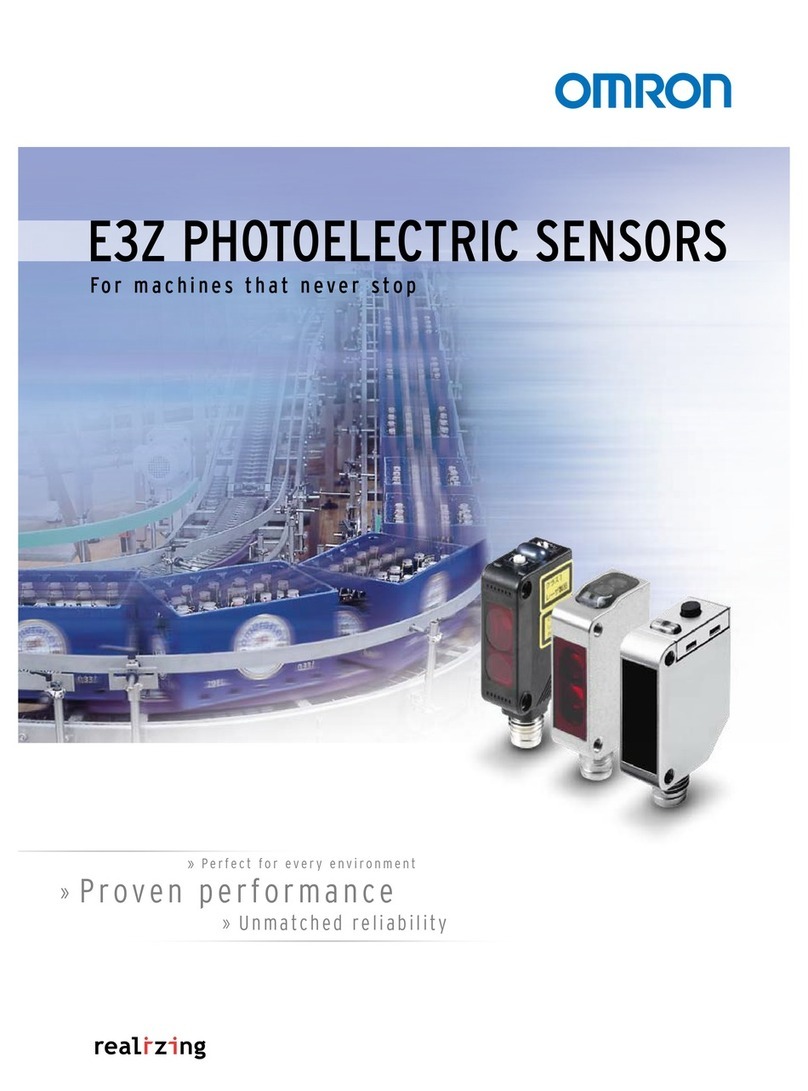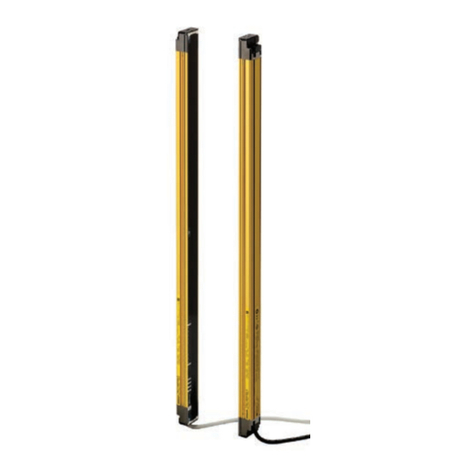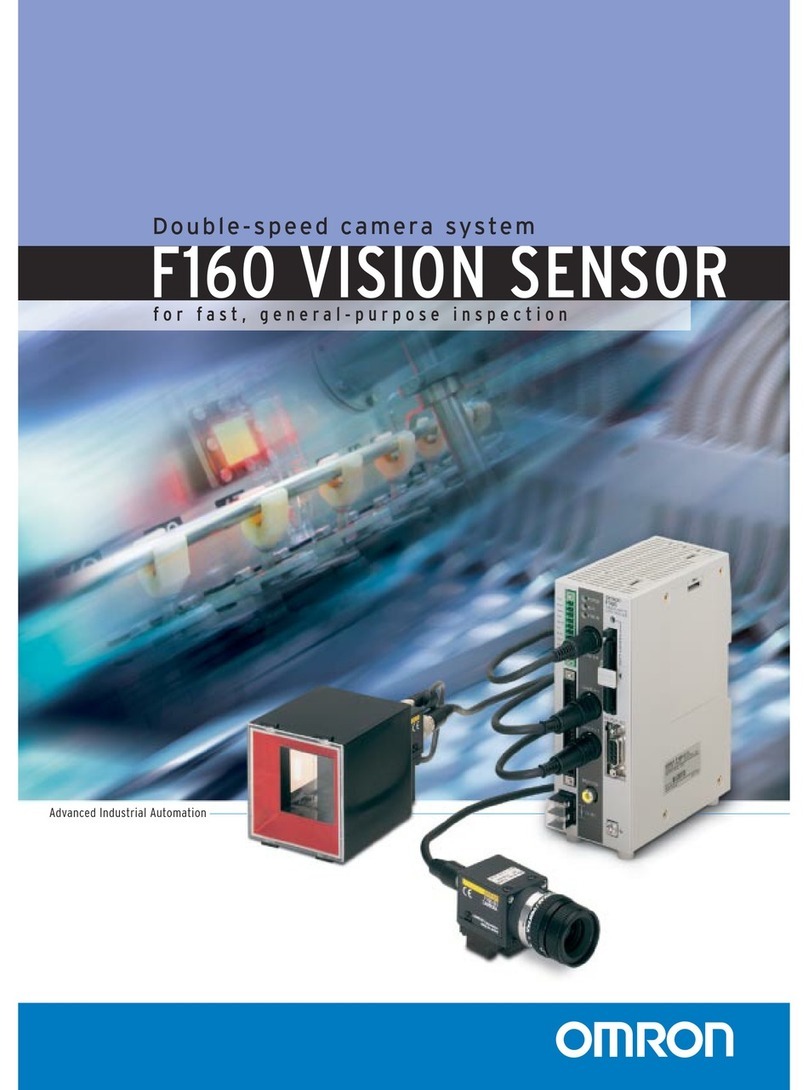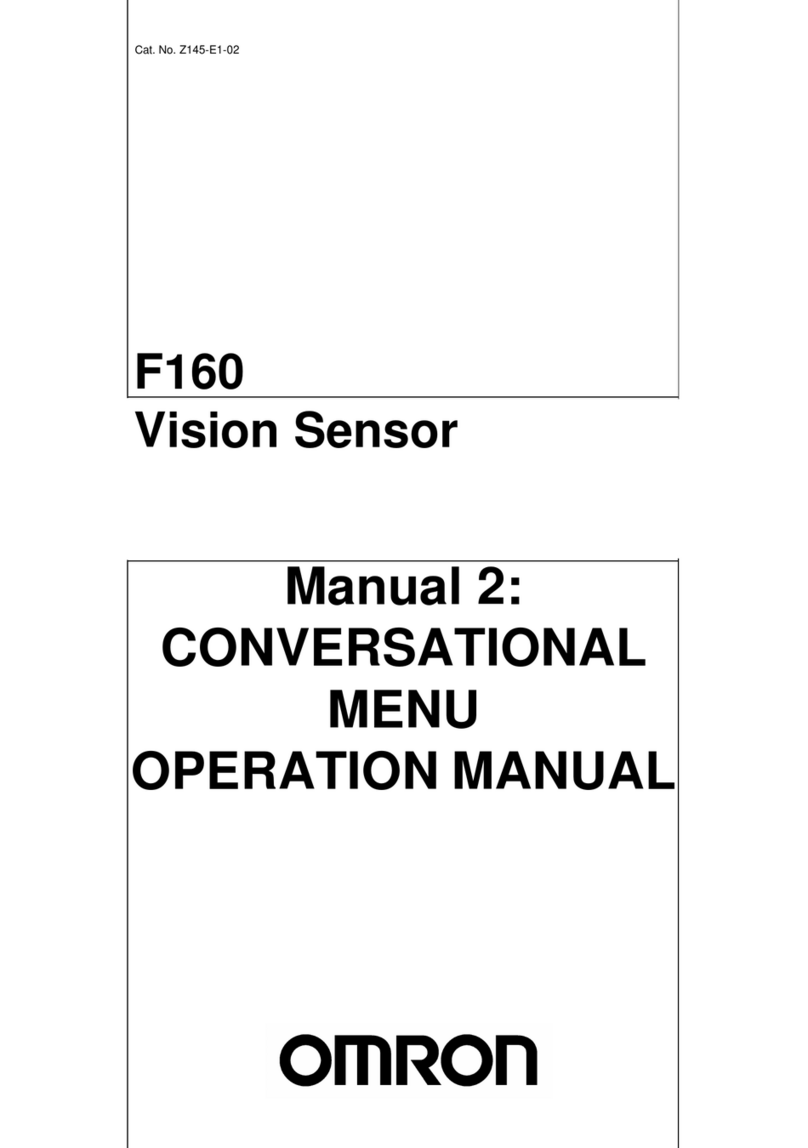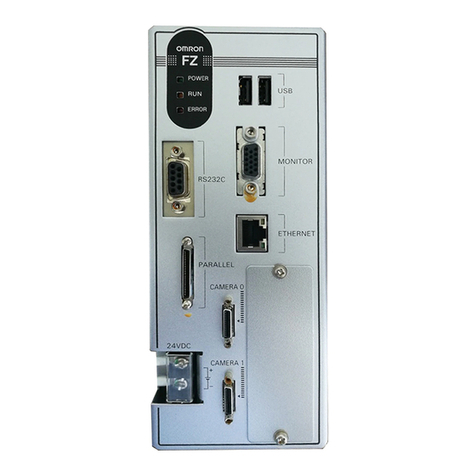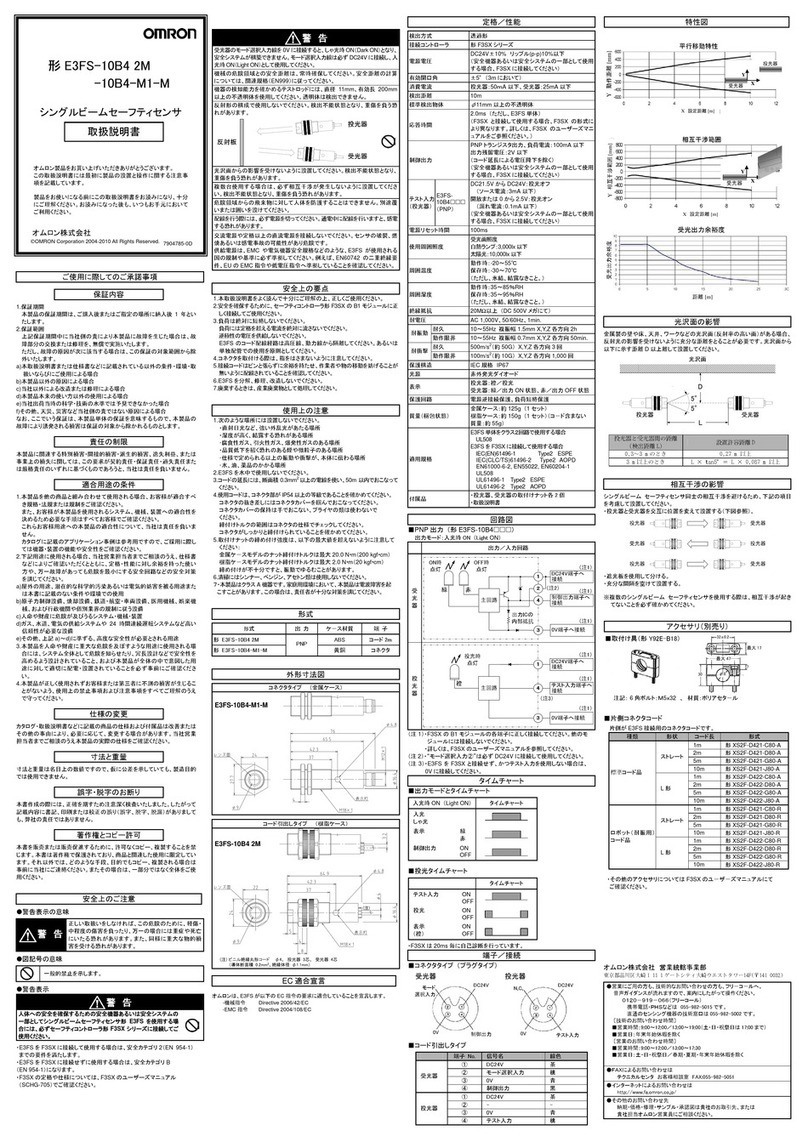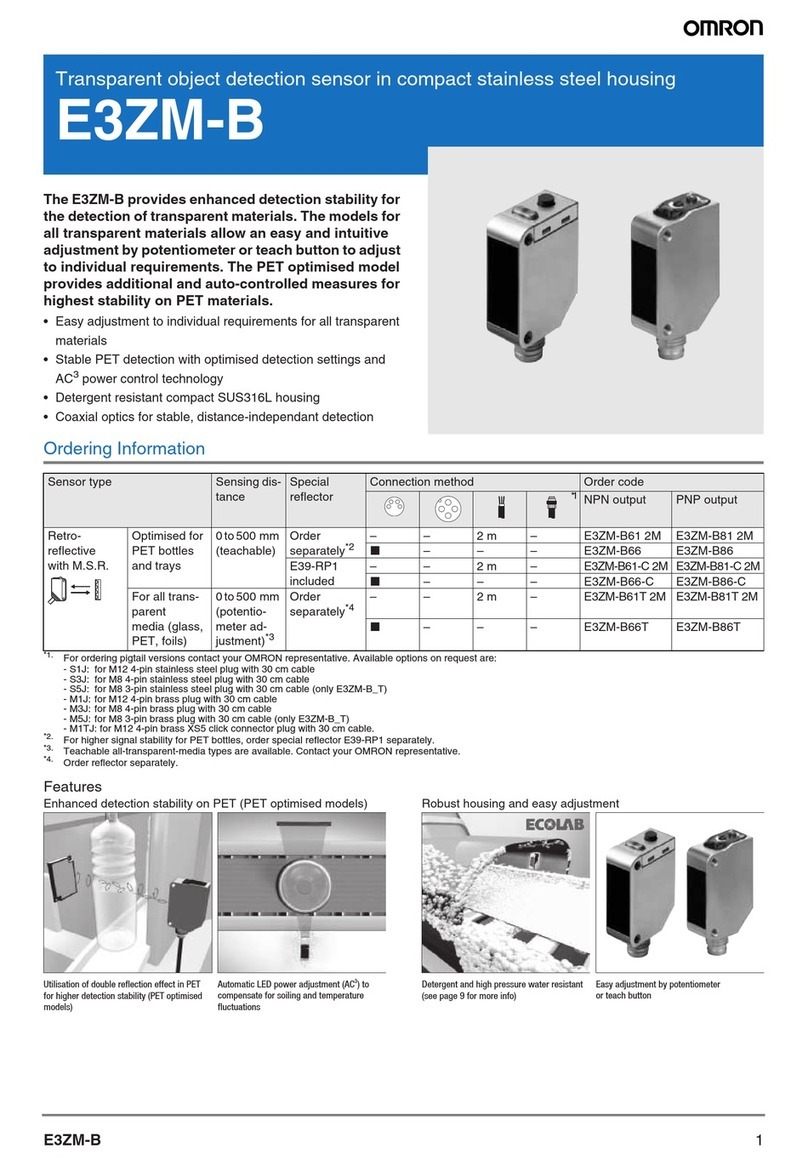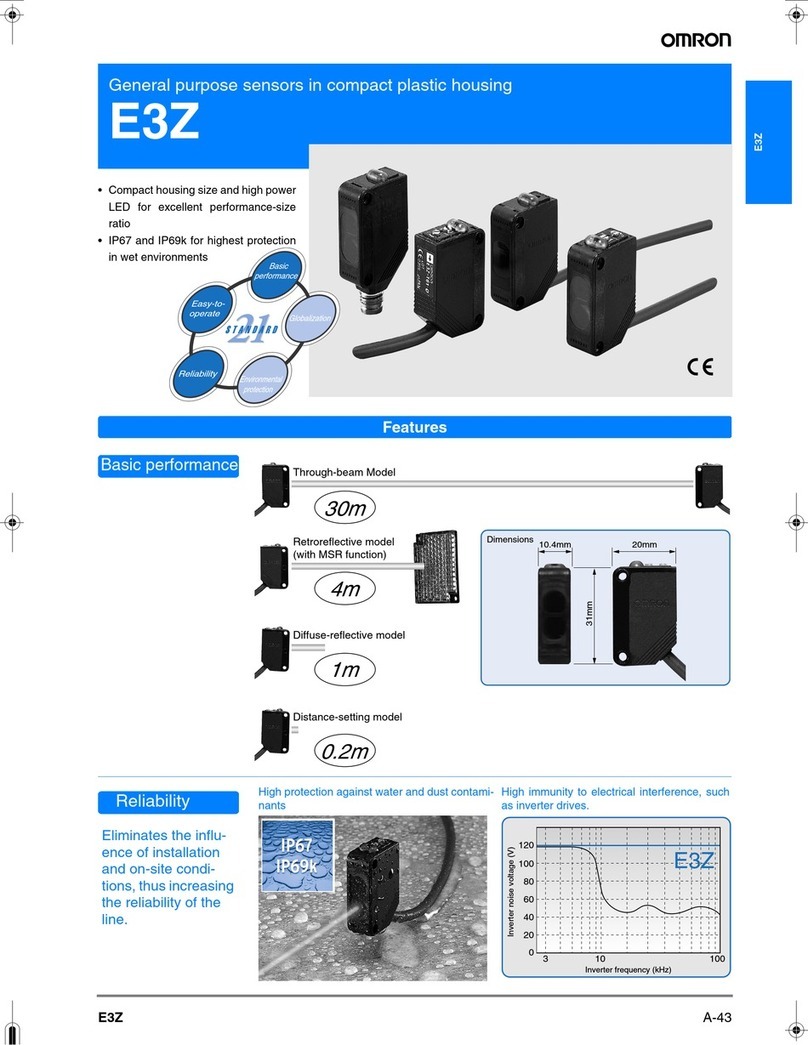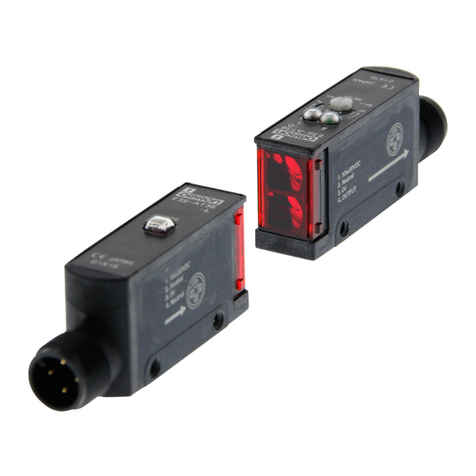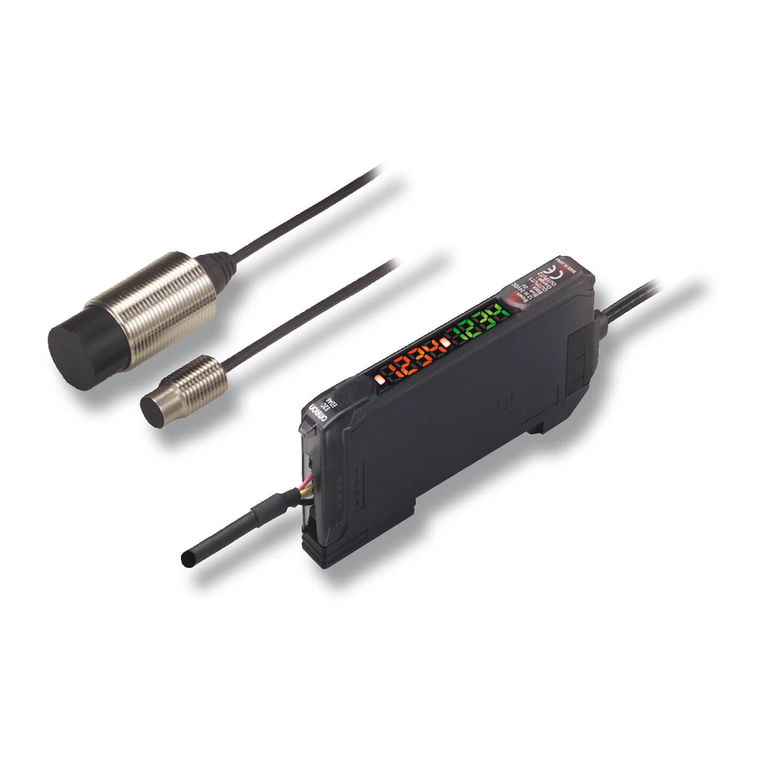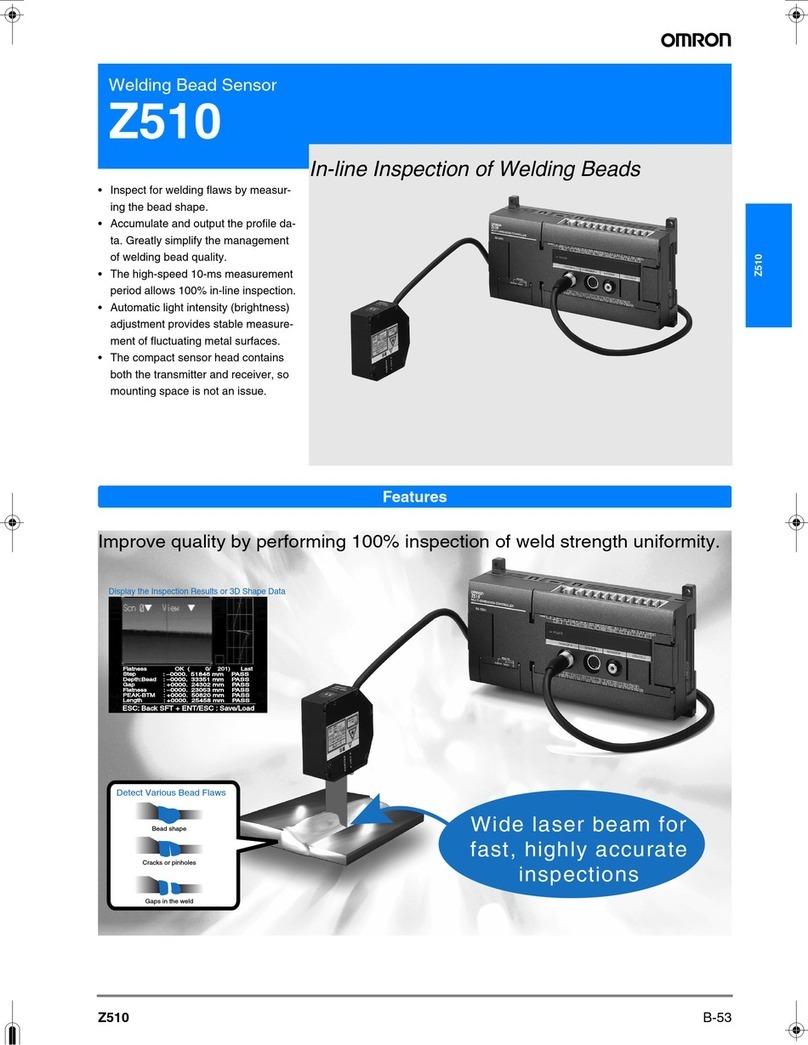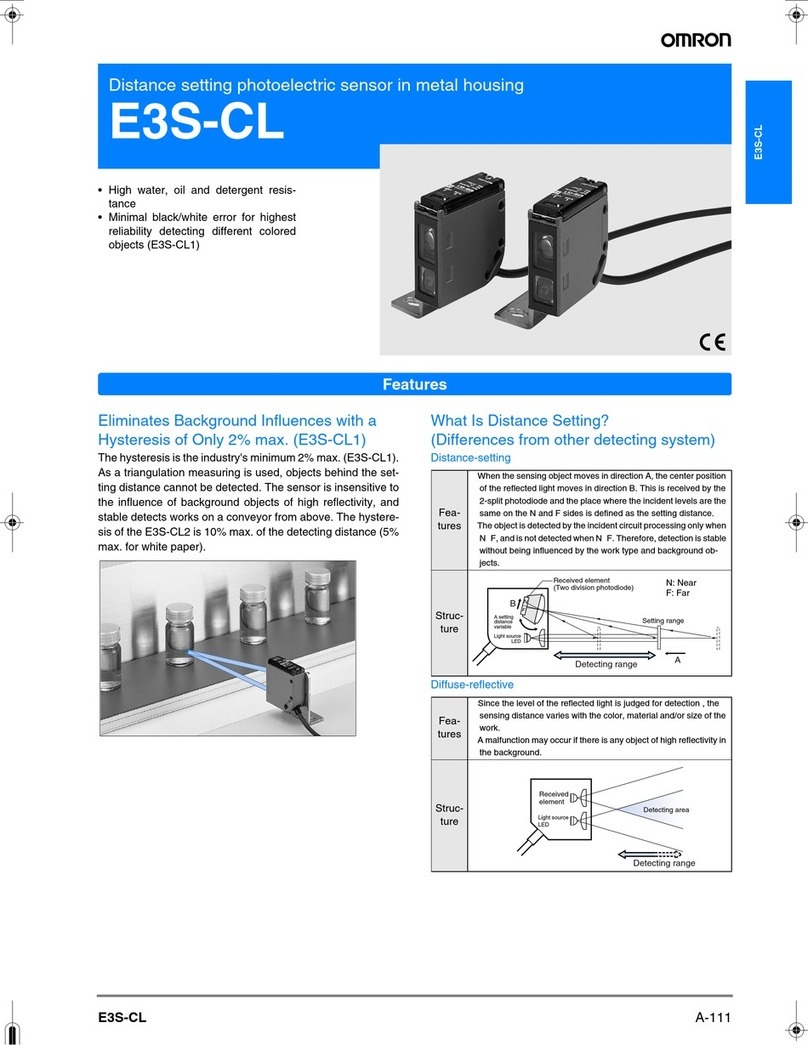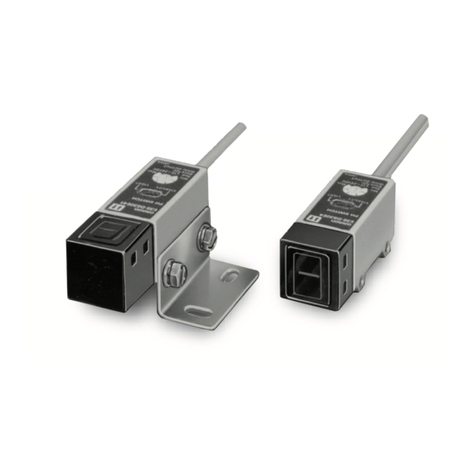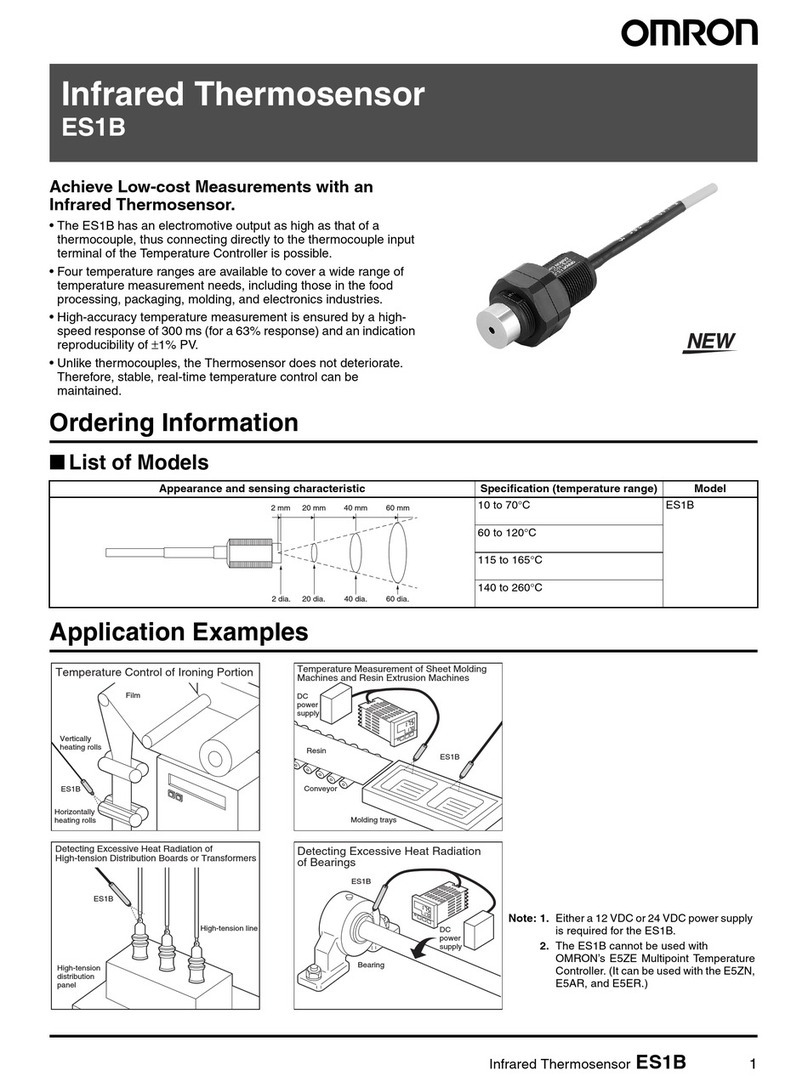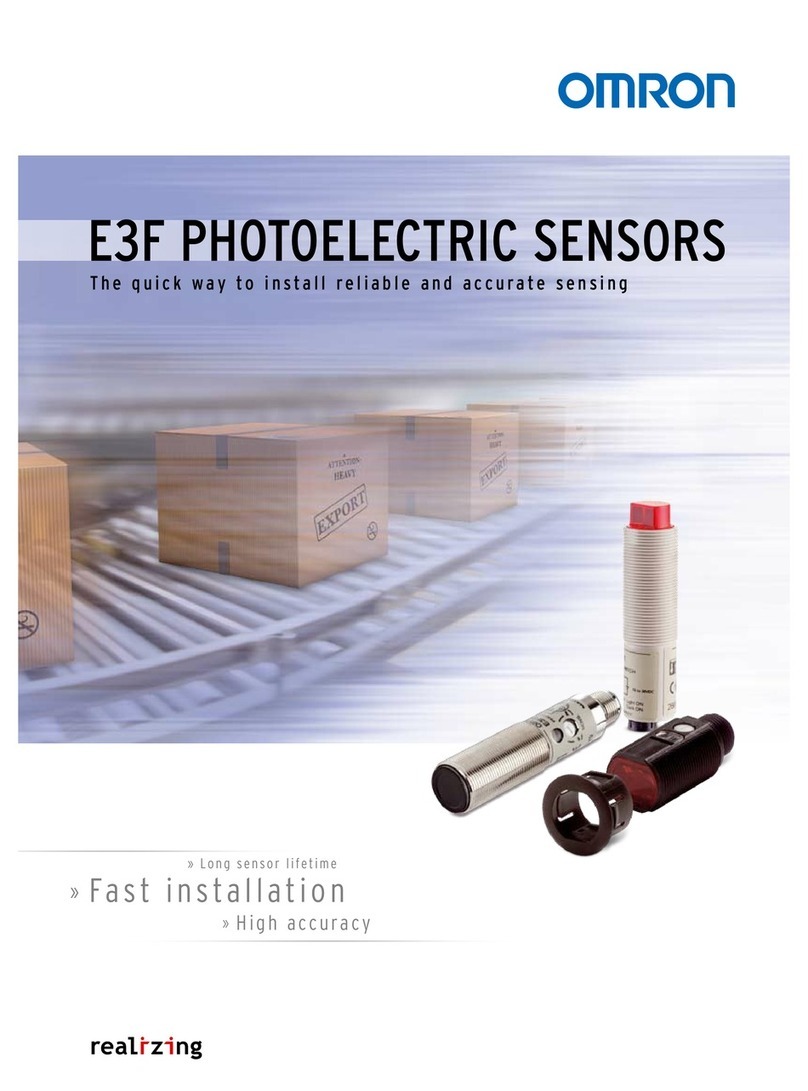
Classification Functions
Span adjuster
(Amplifier) The output is adjusted to approximately 8 V FS before shipping.
The span adjustment changes the ratio of the output current (displacement) to the distance. By using the
span adjustment, the actual current-distance relationship can be changed to either a higher output current at
the same distance or to a lower output current. When there are changes in material or color in the target
object, and a 1:1 ratio is not obtained, span adjustment is used to modify the current output level.
With the span adjuster, it is possible to adjust the full scale of the voltage (±30%) that is output when the
object is within the measurement range.
For the step-by step Operating/Adjusting procedure refer to
-- Span Adjustment
(in a subsequent section).
+30%
-30% +30%
-30%
Sensing
distance
(mm)
Sensing
distance
(mm)
Linear
output
(V)
Linear
output
(V)
Z4M-W40 Z4M-W100
Enable output
(Amplifier) The enable output is ON when the Sensor is performing a displacement measuring operation.
The enable output is OFF when there is no object in front of the Sensor or if the light reflected from the object
is insufficient or too intense.
An open collector output of 50 mA at 40 VDC maximum can be obtained.
In the case of measuring an metal or glossy object, the enable output may be ON even if the object is outside
the measurement range.
Linear output
(Amplifier) An analog voltage signal according to the measuring distance will be output from the output line (black shield
wire).
Voltage output: -4 to 4 V/30 to 50 mm (Z4M-W40), -4 to 4 V/60 to 140 mm (Z4M-W100)
Output impedance: 100 Ω(typical)
The linear output will be locked between 6 and 8 V when the enable output is OFF.
Laser OFF input
(Amplifier) The laser OFF input controls laser emission.
Laser emission is turned on when there is no laser OFF input (with a current leakage of 0.1 mA max.) and it is
turned off when the laser OFF input is short-circuited to the 0-V terminal (with a residual voltage of 2 V max.).
When laser emission is turned Off, the linear output, indicators, and the enable output of the Sensor are on
hold.
There will be a drift of 0.1% FS/s when the analog output of the Sensor is on hold.
The response time required to turn laser emission ON or OFF is 3 ms max.
Laser emission
delaying function
(Sensor and Amplifier)
When the Sensor is turned ON, the range indicators (green) will blink for 3 to 10 s, alerting the user to laser
emission; during this time the linear output is locked between 6 and 8 V. After this time, the laser beam will be
turned ON.
OPERATIONAL EXAMPLES: Z4M SENSOR AND K3TS INTELLIGENT DIGITAL PANEL METER
Measurement distance (set to 40 mm)
Timing input
Deflection value = maximum value - minimum value
K3TS
Note: Use a pushbutton switch to turn ON the timing
input while measuring eccentricity.
Measuring Eccentricity
Using the scaling function, it is possible to convert the
Sensor’s output (±4 V) into the actual measured dimension
of the object for display.
By selecting the appropriate measurement mode that corre-
sponds to the application, necessary data can be easily ob-
tained. In the following application, the peak-to-peak hold
mode is used to measure the eccentricity of an object by
measuring the difference between the maximum and
minimum values while the timing input is ON.
Z4M Z4M
